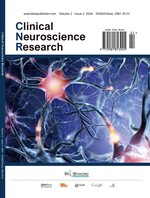Abstract
Objective: To explore the mechanism of action of naringin in protecting nerve-damaged cells through Nrf2/HO-1 and NF-κβ signaling pathways. Methods: In this study, primary microglia were obtained from 8 neonatal suckling mice and treated with different concentrations of naringin, including a control group (control group) and 4 experimental groups. The activity of primary microglia was assessed using the MTT assay, while apoptosis was evaluated using the TUNEL assay. Molecular biology techniques and cell biology methods were employed to study two types of neuronal cells: highly differentiated PC12 cells and primary microglia. Oxidative stress indicators such as reactive oxygen species (ROS), malondialdehyde (MDA), mitochondrial membrane potential (MMP), and glutathione peroxidase (GSH), as well as inflammatory factors including interleukin-6 (IL-6), interleukin-1β (IL-1β), and tumor necrosis factor-α (TNF-α), were detected. Additionally, the expression of related proteins and genes in the Nrf2 signaling pathway and the NF-κB signaling pathway was examined to elucidate the protective effect of naringnin on neuronal cells during oxidative stress and inflammation, as well as the underlying mechanism. Results: In comparison to the control group, naringin treatment resulted in a statistically significant upregulation of the gene expression of Nrf2 and HO-1 in PC12 cells (P < 0.05). Furthermore, compared to the blank control/negative control/model group, naringin notably mitigated the levels of superoxide dismutase, glutathione, malondialdehyde, and nitric oxide in the rats, along with a significant reduction in apoptosis of neurological injury cells (P < 0.05). Conclusion: Naringin boosts cellular antioxidant capacity by activating the Nrf2/HO-1 signaling pathway, thus mitigating damage to nerve cells inflicted by oxidative stress. Additionally, it reduces the release of inflammatory factors by inhibiting the NF-κB signaling pathway, thereby decreasing inflammation levels. This dual action helps safeguard neural tissues from oxidative and inflammatory damage, ensuring the maintenance of normal nerve cell function.
References
Gubert C, Kong G, Renoir T, et al., 2020, Exercise, Diet and Stress as Modulators of Gut Microbiota: Implications for Neurodegenerative Diseases. Neurobiology of Disease, 134: 104621.
Zhang P, Cui J, Mansooridara S, et al., 2020, Suppressor Capacity of Copper Nanoparticles Biosynthesized using Crocus sativus L. Leaf Aqueous Extract on Methadone-Induced Cell Death in Adrenal Phaeochromocytoma (PC12) Cell Line. Scientific Reports, 10(1): 11631.
Rekatsina M, Paladini A, Piroli A, et al., 2020, Pathophysiology and Therapeutic Perspectives of Oxidative Stress and Neurodegenerative Diseases: A Narrative Review. Advances in Therapy, 37(1): 113–139.
Wang JL, Xu CJ, 2020, Astrocytes Autophagy in Aging and Neurodegenerative Disorders. Biomedicine & Pharmacotherapy, 122: 109691.
Filomeni G, De Zio D, Cecconi F, 2015, Oxidative Stress and Autophagy: The Clash Between Damage and Metabolic Needs. Cell Death and Differentiation, 22(3): 377–388.
Li X, Cheng S, Hu H, et al., 2020, Progranulin Protects Against Cerebral Ischemia-Reperfusion (I/R) Injury by Inhibiting Necroptosis and Oxidative Stress. Biochemical and Biophysical Research Communications, 521(3): 569–576.
Wu L, Xiong X, Wu X, et al., 2020, Targeting Oxidative Stress and Inflammation to Prevent Ischemia-Reperfusion Injury. Frontiers in Molecular Neuroscience, 13: 28.
Ahmad A, Ahsan H, 2020, Biomarkers of Inflammation and Oxidative Stress in Ophthalmic Disorders. Journal of Immunoassay & Immunochemistry, 41(3): 257–271.
Pegoretti V, Swanson KA, Bethea JR, et al., 2020, Inflammation and Oxidative Stress in Multiple Sclerosis: Consequences for Therapy Development. Oxidative Medicine and Cellular Longevity, 2020: 7191080.
McGarry T, Biniecka M, Veale DJ, et al., 2018, Hypoxia, Oxidative Stress and Inflammation. Free Radical Biology & Medicine, 125: 15–24.
Zuo L, Prather ER, Stetskiv M, et al., 2019, Inflammaging and Oxidative Stress in Human Diseases: From Molecular Mechanisms to Novel Treatments. International Journal of Molecular Sciences, 20(18): 4472.
Yu KE, Alder KD, Morris MT, et al., 2020, Re-Appraising the Potential of Naringin for Natural, Novel Orthopedic Biotherapies. Therapeutic Advances in Musculoskeletal Disease, 12: 1759720X20966135.
Dong X, Fu J, Yin X, et al., 2016, A Review of its Pharmacology, Toxicity and Pharmacokinetics. Phytotherapy Research, 30(8): 1207–1218.
Wang L, Zhang W, Lu Z, et al., 2020, Functional Gene Module-Based Identification of Phillyrin as an Anticardiac Fibrosis Agent. Frontiers in Pharmacology, 11: 1077.
Dai P, Cui C, Liu Y, et al., 2020, Mechanism of Improvement of Insulin Resistance by Naringin in Gestational Diabetic Mice. Chinese Journal of Clinical Pharmacology, 36(22): 3747–3750.
Mo L, Wu K, 2015, GW26-e4796 Effect of Naringin on Myocardial Remodeling by Regulating the Expression of FABP4, FFA in Rats with Diabetes Cardiomyopathy. Journal of the American College of Cardiology, 66(16): C130.
Slámová K, Kapešová J, Valentová K, 2018, “Sweet Flavonoids”: Glycosidase-Catalyzed Modifications. International Journal of Molecular Science, 19(7): 2126.
Kola PK, Akula A, Nissankara RLS, et al., 2017, Protective Effect of Naringin on Pentylenetetrazole (PTZ)-Induced Kindling; Possible Mechanisms of Antikindling, Memory Improvement, and Neuroprotection. Epilepsy & Behavior., 75: 114–126.
Nilamber LDR, Muruhan S, Nagarajan RP, et al., 2019, Naringin Prevents Ultraviolet-B Radiation-Induced Oxidative Damage and Inflammation Through Activation of Peroxisome Proliferator-Activated Receptor T in Mouse Embryonic Fibroblast (NIH-3T3) Cells. Journal of Biochemical and Molecular Toxicology, 33(3): e22263.
Cui J, Wang G, Kandhare AD, et al., 2018, Neuroprotective Effect of Naringin, a Flavone Glycoside in Quinolinic Acid-Induced Neurotoxicity: Possible Role of PPAR-y, Bax/Bcl-2, and Caspase-3. Food and Chemical Toxicology, 121: 95–108.
Zhang P, Cui J, Mansooridara S, et al., 2020, Suppressor Capacity of Copper Nanoparticles Biosynthesized Using Crocus sativus L. Leaf Aqueous Extract on Methadone-Induced Cell Death in Adrenal Phaeochromocytoma (PC12) Cell Line. Scientific Reports, 10(1): 11631.
